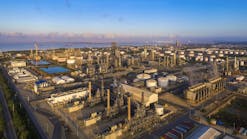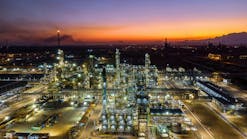Murkowski urges directional drilling for ANWR
US Sen. Lisa Murkowski (R-Alas.) said on Feb. 19 that she plans to propose using directional drilling on state land and waters in initial Arctic National Wildlife Refuge (ANWR) oil and gas resources development, with no surface occupancy.
That approach means there would be no occupancy, pipelines, construction, or facilities that would impact the refuge or its wildlife, she said in her annual address to Alaska’s legislature in Juneau.
“America will get the energy it needs, and those concerned about the impact to wilderness will be able to enjoy and preserve the refuge exactly as it is today. It is the best of both worlds,” she maintained.
Murkowski said her bill would take advantage of technological improvements in underground oil development to allow state land-based production platforms to siphon crude oil and gas from beneath the refuge.
Current directional drilling technology would permit only about 10% of ANWR’s estimated oil and 80% of its gas to be produced, she conceded. But future subsurface production technology could increase those percentages substantially, she added.
According to Murkowski, the advantage of her proposal is that drilling from state lands would allow production to begin sooner. Congress already has set a “no surface occupancy” precedent of development in a wilderness area when it approved the 2007 Wyoming Range Legacy Act, the first bill to permit underground oil development from beneath a wilderness area, she said.
She urged US President Barack H. Obama’s administration to approach her idea with an open mind. “We have an innovative, brand new approach to energy production. I urge those opposed to development in ANWR to take a close look at my proposal: It will not harm ANWR’s tundra or ecosystem, or the Porcupine caribou herd, which does not travel on state lands,” Murkowski said.
Gas pipeline warning
While there is still opposition in Washington to opening ANWR’s coastal plain to oil and gas leasing, the new administration strongly supports efforts to construct a gas pipeline from Alaska to markets in the Lower 48 states, she continued. But she warned that the rest of the country won’t wait forever for Alaska’s gas.
“Shale gas production is growing by leaps and bounds. America will purchase its gas from the sources that are ready to deliver it. If that’s not Alaska, America will buy elsewhere. That will really strand our gas, and it may do so for an awfully long time,” Murkowski said.
Two steps are necessary to get the project moving, she maintained. The first is to reach a consensus on a single pipeline project now and not wait for an uncertain open season next year. “In order to arrive at that point, we will need to bring the competing pipeline proponents (the producers who own the gas, and the state and federal governments) to the same table,” Murkowski said. The second step would be to unite around fiscal terms related to North Slope gas production, she said.
This is one case where Alaskans can’t blame the federal government for delays in a major capital project in the state, Murkowski said. Whether it has been to mitigate the project’s financial risk, to streamline permitting, or to open a federal coordinator’s office, the federal government has stepped up when it has been asked to, she indicated.
She also called for a resolution of the impasse over prices for Cook Inlet gas and construction of a new pipeline to deliver gas to people who live in the 49th State. Both gas pipelines need to move forward, said Murkowski. “If additional federal legislation is necessary to push this project across the finish line, I stand ready to press for it,” she declared.
The Alaska Wilderness League immediately blasted Murkowski’s ANWR proposal. “It’s just Big Oil’s latest scheme to get its hands on pristine, untouched lands that millions of Americans have fought for years to protect. No matter how you dress it up, the goal is still to develop one of the few truly wild places we have left,” said Karen Miller, the group’s government affairs director.

